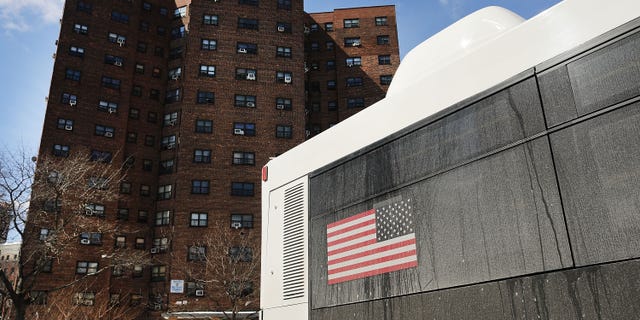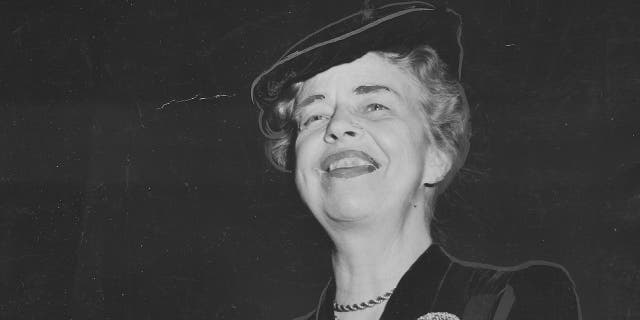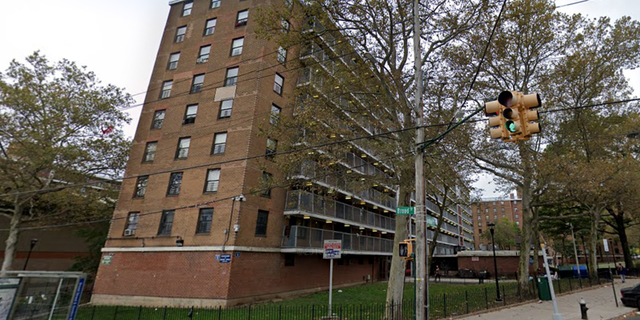Howard Husock: How Progressives’ Grand Plans for Subsidized Housing Have Harmed African Americans
NEWYou can now listen to Fox News articles!
Editor’s note: The following essay is adapted from a speech delivered by the author at the Center for Urban Renewal and Education’s annual conference in Washington, D.C. on October 4.
It goes by many names: affordable housing, public housing, housing choice vouchers, Section 8, low-income housing tax credit developments or simply “the projects.”
But I’m here today to tell you that all of these housing policies, dating from the 1930s until the present day, have been and remain harmful, indeed especially harmful to the interests of African Americans. They have lured Black households into dependency and long-term poverty, rewarded single-parenthood and led to the gnawing gap in home ownership and wealth between White and Black households.

FILE – The public housing project the Farragut Houses stand in Brooklyn on March 16, 2017, in New York City.
Our housing policies have had all these deleterious effects in a series of ways: by destroying Black neighborhoods filled with Black-owned businesses and homeowners but labeled as slums; by replacing them with public housing projects where no ownership was possible and Blacks were and are over-represented; by setting housing rules such that both increasing income and marriage are punished; and by defining affordable housing as subsidized rentals rather than small, privately-owned homes whose ownership builds wealth.
RENT STABILIZATION, AFFORDABLE HOUSING MEASURES APPROVED ACROSS SEVERAL US CITIES
I’ll take these series of mistakes one at a time.
Let’s start by going back to the Franklin Roosevelt administration and the National Housing Act of 1937. The progressives of the New Deal were convinced that the private housing market was doomed to fail the majority of the population—and that government should step in to build and manage replacement housing called public housing.
First lady Eleanor Roosevelt pushed especially hard for housing projects for African Americans, convinced that the segregated Black neighborhoods of that era needed to be replaced. She even came to Detroit to cut the ribbon on the first public housing project, named for Frederick Douglas.

Former first lady Eleanor Roosevelt in 1945.
( Photo by Afro American Newspapers/Gado/Getty Images)
But housing progressives utterly misjudged what they were replacing.
Although we are often told that Black neighborhoods were substandard areas owned by White slumlords, Census records tell a different story.
In Detroit, the Douglas Houses and later its companion the Brewster Houses, replaced a neighborhood known as “Black Bottom” (for its soil not its race) that was home to no less than 300 Black-owned businesses, a significant percentage of one, two and three-family homeowners, a thriving branch of the Urban League and other self-help groups, and, of course, many churches—including the Bethel AME, led by the Rev. C.L. Franklin.
I don’t have to tell this group who he, or his daughter [Aretha Franklin] was, or remind you of the power of his sermon, “The Eagle Stirreth Her Nest” and its message of the way strength and grace can overcome oppression.
When the time arrives, the eagle takes her young upon her back out of the nest and then dives sharply down, leaving them learning to fly, only to swoop down to protect them if needed.
We have followed a housing policy path that has led us to a dead-end of impoverishment, especially for African Americans.
“God does us like that sometimes” when we are in too “comfortable a nest of circumstances” and “we don’t bother to struggle, we get comfortable right where we are.”
Even the history of slavery could, preached the Rev. Franklin, be overcome. Four hundred years was just a little while with God, he preached.
The great migration from South to North, he preached in his church, that would be demolished by the government, was God stirring the nest.
Let me add this morning of the day when Yom Kippur begins that I’m proud, as a Jew, that Rev. Franklin found inspiration in the story of the Hebrews from the Book of Deuteronomy.
GEORGIA STOPS ACCEPTING APPLICATIONS FROM PEOPLE ASKING FOR RENT ASSISTANCE
All the effort that built Black Bottom aimed toward that goal of struggling toward self-improvement—and was, by 1950, left as nothing more than vacant lots, a highway and high-rises which deteriorated so quickly that would have to be demolished themselves.

The Stapleton Housing Project on Staten Island in New York City.
(Google Maps)
The same story of community destruction and high-rise hells would play out in African-American neighborhoods across the country: East Harlem, Central Avenue in Cleveland, Desoto-Carr in St. Louis, Bronzeville in Chicago. In St. Louis, the high-rises of the Pruitt-Igoe projects won an architectural award when they opened in 1956—and were literally imploded in 1971.
What should Mrs. Roosevelt have done instead? Improvements to homes that lacked amenities, rather than tearing them down. A Fair Housing Law that would have permitted Black owners to move up and out, to be followed by a new generation of owners building wealth.
None of that happened until the Fair Housing Act of 1968, by which time Blacks would have long since been steered into the alleged reward of the projects.
Today, even as African Americans comprise 13 percent of the U.S. population, they are 48 percent of public and subsidized housing.
But isn’t that a benefit? A way to reduce poverty? No, just the opposite. Consider the rules which govern public housing and its close cousin Section 8 voucher housing, in which government pays most of the rent for a private apartment.
First, there’s the matter of how to qualify.
CALIFORNIA’S HOMELESSNESS CRISIS HAMSTRUNG BY EXPENSIVE LACK OF ACCOUNTABILITY
The poorest households get priority—and that means single-parent households, almost always single mothers, go to the head of the line. Today in public housing, only 4 percent of households are comprised of children with two parents.
We all know that the life prospects of low-income single parents are not positive. But even those who would seek to improve themselves are, instead, punished. By rule, subsidized tenants pay 30 percent of their income in rent.
That may sound like a good deal until you look closely: it means that if your income goes up, well so does your rent. Who would ever sign a lease like that in the private market? It’s not a ticket out of poverty but a shackle that keeps one in it.
Today in public housing, only 4 percent of households are comprised of children with two parents.
All this affordable housing, this government benefit, remains a temptation, luring one into dependency. The promise of physical comfort distracts from the struggle that leads gradually to accomplishment and achievement.
The fact that some projects are new and yet to deteriorate should not distract us from their fundamental invitation to dependency. Here’s a figure for you: the average time residents have spent in New York City public housing is 23 years. There are some residents who have lived their entire life in the projects.
CLICK HERE TO GET THE OPINION NEWSLETTER
The growth that comes with going to Home Depot to get the materials to do your own house repairs is denied them; they are taught to be supplicants begging for basic services.
Where does that leave us today? For one thing, we must signal to public officials that they need to stop doing anyone the false favor of trapping them in the gilded cage of subsidized housing. But what can be done to rebuild and restore neighborhoods, those marked by vacant lots and food deserts? History—the history of Black Bottom—needs to be our guide.
Rather than building high-rise apartments on those vacant lots, we need to make sure our local laws permit the construction of homes that local residents can afford naturally—because they are modest homes on small lots, starter houses, maybe two or three-families, maybe paying the mortgage by taking in lodgers.
Some of those homes should have storefronts on the ground floors, where grocery stores and small businesses such as barber shops can set up shop.
CLICK HERE TO GET THE FOX NEWS APP
I’m trying to paint a picture here—of a real neighborhood, one where there are people on the streets and kids walking to school in safety. Where wealth is created not by checks from the government but through ownership and appreciation.
We have, I’m arguing, followed a housing policy path that has led us to a dead-end of impoverishment, especially for African Americans. We need to rethink—and re-do. To go back, if you will, to old-time ways—that worked.
CLICK HERE TO READ MORE FROM HOWARD HUSOCK
" Conservative News Daily does not always share or support the views and opinions expressed here; they are just those of the writer."
